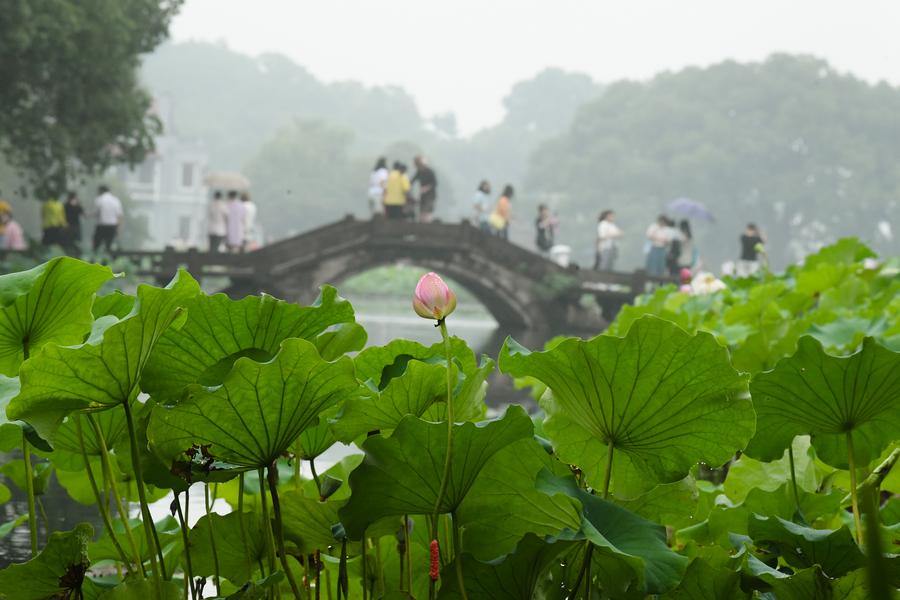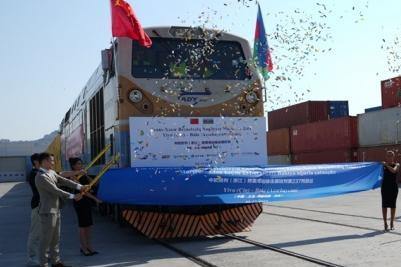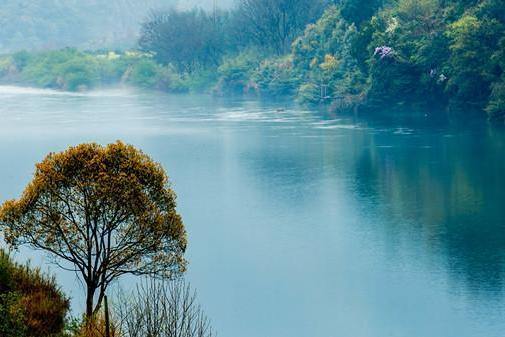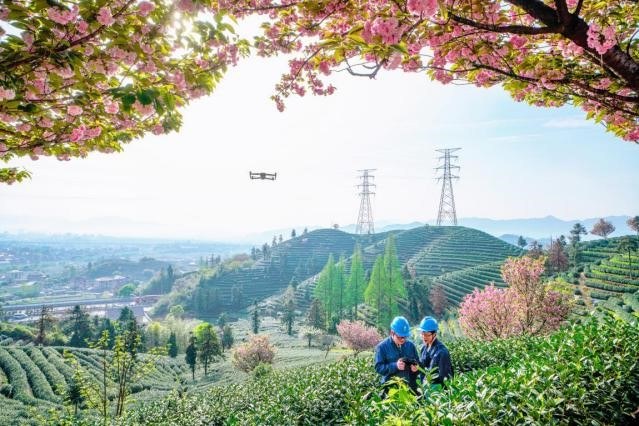良渚古城遗址正式列入世界文化遗产的那一刻,距离“良渚”两个字首次出现在考古领域,已经过去了83年。
历史的一大步,是从考古人的一小铲,甚至是从一块小石头、几片黑陶片开始的。
这个东亚最早的国家社会,是如何在5000年后被考古人一点一点发现的?
时光倒流。让我们一起回溯这五千年的中华文明曙光散发光芒的每一个瞬间。
从首次发现到首次命名
83年前,谁都不会想到,只有25岁的清瘦书生施昕更,西湖博物馆的普通职员,就是良渚遗址的发现者。
1936年12月到1937年3月,施昕更在他的家乡余杭良渚镇一带代表西湖博物馆对棋盘坟等六处遗址,进行了三次小范围试掘,发现了以黑陶为特征的新石器时代遗址十多处。
这是良渚文化的首次科学考古发掘。很快,施昕更撰写出版了良渚文化的第一部考古发掘报告《良渚》。
有一次良渚文化考古发掘,知道的人不多,就在现在的浙江大学玉泉校区。1953年,这里叫杭州老和山,第一次发掘由华东文物工作队负责,出土了石钺。
同一个地方,1936年5月31日,西湖博物馆和吴越史地研究会曾在这里做过试掘清理。那时候的名字,杭州人更觉得亲切,叫“古荡遗址”。试掘报告的封面,还是蔡元培题的。
1959年12月26日,考古学家夏鼐参加了一个名字很长的会议——长江流域规划办公室文物考古队队长会议,做了题为《长江流域考古问题》的发言:“太湖沿岸和杭州湾的良渚文化,是受了龙山文化影响的一种晚期文化” 。至此,“良渚文化”的命名正式提出。
2019年,正好是“良渚文化”命名60周年。就是这位浙江温州学者的发言,给了良渚一个“名分”。
从首个工作站到“王的墓葬”
良渚遗址发掘的核心力量,毫无疑问,便是浙江省文物考古研究所。
浙江省文物考古研究所于1979年正式成立,1981年,发掘余杭瓶窑吴家埠遗址时,发现了马家浜、崧泽和良渚文化的堆积与墓葬,并在当地建立了第一个良渚工作站:吴家埠工作站。
从此,良渚一带开始有了长期稳定的考古工作,随后组织了两次调查,新发现不少遗址。
1986年在“良渚发现50周年会议”上,考古学家王明达提出“良渚遗址群”的概念,并公布了“已知的地点多达四五十处”。
20世纪70、80年代,江苏、上海发现一系列重要良渚文化遗址.堪称里程碑的,就是草鞋山。1973年初夏,南京博物院对吴县草鞋山进行发掘,这座良渚文化大墓M198(编号198号墓,下同),是良渚文化研究历程中第一次发现的大型高等级墓葬。
良渚考古的转折点,发生在1986年和1987年。浙江余杭反山王陵、瑶山祭坛的发掘,在考古学界看来,绝无仅有,石破惊天。
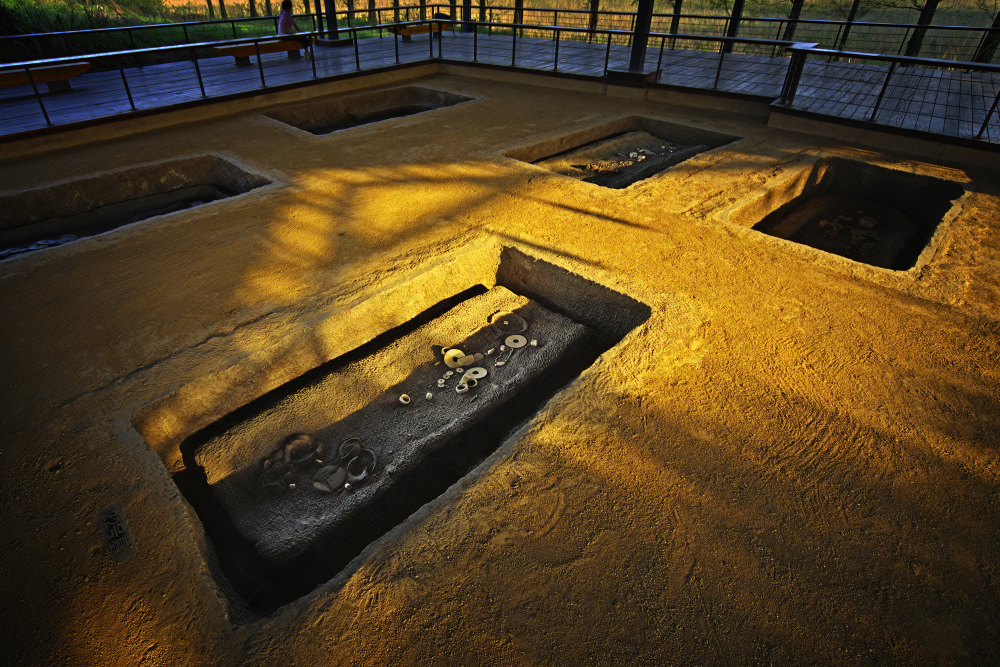
1986年,浙江省文物考古研究所在反山西部660平方米的发掘中,共清理良渚文化大墓11座,其中,12号墓刚好位于中间位置,显露出它的特殊身份。反山王陵是已知良渚文化遗址出土玉器数量最多,品种最丰富,雕琢最精美的一处高等级墓葬,总共出土了1200多件(组)玉器。更重要的是,首次在玉器上发现了良渚人的完整LOGO——完整的神人与兽面复合的图像。
既然有良渚国王,那么王的女人在哪儿?1987年,考古队在这片红土中发现了一座祭祀遗址,名为瑶山。瑶山11号墓玉器出土了女人拥有的最高等级玉器和奢侈品。据推测,墓主人应当是良渚王后。
1991年,考古队员发现了一座形制与瑶山十分相似的祭坛,并清理了4座大墓,这就是汇观山。两座祭坛上为什么都会有贵族大墓?
考古队员发现,墓葬明显破坏了祭坛原先的构筑设计,因此推测在这些墓葬埋入时,祭坛的最初的祭祀功能可能已经放弃了,而是转变为显贵者们的专用墓地。
瑶山和汇观山相距约7公里,都始建于良渚文化早期,建在自然山体之上,形态也相似,高台顶部有一个耐人寻味的“回”字形灰土方框。我们至今还能看到瑶山祭坛垒石包边的拐角,整齐,结实。
消逝的良渚古城逐渐露脸
2006年6月,考古专家刘斌带着考古队在瓶窑葡萄畈遗址进行试掘。一条良渚时期的南北向古河道的发现,让刘斌感觉有戏。洛阳铲一把下去,在3米多深的地方,碰到了石块。
一石激起千层浪。
2007年3月到11月,经过发掘最终发现确认了四面城墙。
2007年11月29日,由浙江省文物局和杭州市政府共同举行了新闻发布会,宣布发现了面积达300万平方米良渚古城。
良渚古城像一个圆角长方形,总面积近300万平方米。城墙总长约6公里,共发现8座水城门,四面城墙各2座,另在南城墙中部发现陆城门一处。
莫角山宫殿区,位于古城的正中心,堪称中国最早的“紫禁城”,面积近30万平方米,上面又分布着三座宫殿:大莫角山、小莫角山、乌龟山。

考古队员在宫殿区,发现了35座良渚人的房子,排列有序,规划严谨。其中,大莫角山上发现了7座300到900平方米的房屋基址,最大的那座房基,有940平方米。
2007-2019年,良渚遗址的考古不再是散点式的,开始进入到长期的、有计划的考古阶段。
经过12年的大规模勘探、调查和发掘工作,我们对良渚古城的结构布局和格局演变有了清晰的认识——
良渚古城遗址由良渚古城核心区、水利系统、祭坛墓地和外围郊区等部分组成。其中,良渚古城的核心区面积为800万平方米,可分为宫殿区、内城和外郭三重结构体系,类似后世中国都城的宫城、内城和外郭城,良渚人创造了中国最早的三重城格局。
2009年到2016年,良渚古城西北部一个大型水利系统的发现,再次证实了古城的都城结构。
1936年至今,良渚文化遗址到底发现了多少处?
除了以良渚古城为核心的分布区,面积约3.65万平方公里的环太湖地区,还有外围区,向北可扩展至江淮地区、宁镇地区,向南可达金衢盆地、宁绍地区,目前已发现良渚文化遗址1000多处,出土了不少重要遗存。
2010年,杭州余杭区茅山遗址发现了一条良渚文化时期的独木舟,和如今的独木舟样子差不多,全长7.35米、最宽0.45米。这是良渚文化首次发现独木舟,也是目前国内考古发掘出土中最长、最完整的史前独木舟。
位于杭州市余杭经济开发区的玉架山遗址,2008年到2016年发现了由6个相邻的环壕围沟组成的良渚文化完整的聚落遗址,反映了良渚文化社会的基本单元和结构,六个环壕应该代表了六个相关的氏族。
2011年到2015年,江苏考古学家发现蒋庄遗址,位于江苏兴化、东台两市交界处。这个发现震撼了很多人,因为它更新了我们的记忆条——过去,学界传统观点认为,良渚文化的范围以环太湖为主,向北不超过长江,但它的发现,填补了长江以北地区良渚文化考古发现的空白。其中最引人瞩目的,当数遗址东北部的良渚文化墓地。目前,已清理墓葬有280座,都是长方形竖穴土坑,可分出单人仰身直肢一次葬、火化二次葬和拾骨二次葬三种葬式,出土各类质地随葬品700余件。随葬玉器中包含有琮、璧类高等级礼玉,并出土刻绘“祭坛”符号的玉璧一件。
良渚人做各种高端工作,工种很多,他们也会在河道两岸摆摆“市集”,建各种“工作室”。2015年,考古队员在莫角山东南脚下,一条名为钟家港的南北向主河道里,发现了大量玉料、玉石钻芯、燧石等跟制玉有关的遗物,同时也发现了大型木构件、漆木器、骨器等制作的残件、半成品和加工工具。这是古城内首次发现手工业作坊区。
2017年到2019年,考古队员在浙江德清一片名为中初鸣的遗址群里,发现了良渚人的大型制玉“园区”。这个迄今为止长江下游地区发现的良渚文化时期规模最大的制玉作坊遗址群,出土了大量制玉相关遗存,是目前出土玉料、玉器半成品最多的良渚文化遗址。这里不止一家制玉“工厂”,人们陆续发现和确认了木鱼桥、田板埭、保安桥、小桥头、王家里等多处遗址点,目前已有7处,这些遗址点均有玉料出土,面积达到了100万平方米。
良渚古城遗址申遗成功,但考古发掘仍在继续。关于这个国度更多的秘密,会继续被发现、被讲述、被期待。
83-Year Archaeological Projects Led to Discovery of Ancient Liangzhu City
First Digging and Identification
Shi Xingeng was 25 years old when he conducted an archaeological project around Liangzhu from December 1936 to March 1937. Liangzhu, part of Yuhang, now a district of Hangzhou, was the young archaeologist’s hometown. On behalf of the West Lake Museum, he explored six locations around Liangzhu. The excavation was on a small scale and he test-dug there three times. He discovered black pottery objects which indicated the human activities in the Neolithic Age. He reported his discovery in an academic paper titled.
As the epoch-making excavation marked the beginning of an epic archaeological project which has been going on strong for eight decades, Shi Xingeng is much talked about among archaeologists and historians. Less well known is another excavation conducted on May 31, 1936 by archaeologists of the West Lake Museum and Institute of Historical ad Geographic Studies of Wu Yue at Laohe Mountain near to the city proper of Hangzhou. The site was referred to as Gudang Site in a report, the cover of which carried an inscription by Cai Yuanpei, a famed scholar and educator of national renown. The site is on the present-day Yuquan Campus of Zhejiang University. In 1953 the site was excavated again. A stone -axe was unearthed there.
The name of the Liangzhu Culture was historically put forward at an academic meeting held on December 26, 1959 by the archaeologist Xia Nai. Speaking of archaeological issues along the Yangtze River, he pointed out that the Liangzhu Culture around the Taihu Lake and Hangzhou Bay flourished at the late period of the Neolithic Age with influences of the Longshan Culture.
The year 2019 marks the 60th anniversary of the designation. The speech of the scholar who was a native of Wenzhou in the southeast of Zhejiang gave birth to an identity that Liangzhu is proud of.
First Workstation
and King’s Women
Zhejiang Institute of Cultural Relics and Archaeology has been playing a central part in all the key archaeological projects around Liangzhu. Shortly after its inception, the institute started a digging project at the Wujiabu Site in Pingyao, Yuhang. Archaeologists discovered layers of three different cultures and tombs. The setup of the Wujiabu Workstation, the first of its kind in the extensive archaeological project of Liangzhu, marked a systematic archaeological exploration around Liangzhu. The institute conducted two more digging projects and found more sites.
The archaeologist Wang Mingda suggested the notion of Liangzhu Site Complex at a meeting in commemoration of the 50th anniversary of the discovery of Liangzhu sites. The meeting was held in 1986. It was announced at the gathering that the complex comprised about 50 sites.
A milestone discovery of Liangzhu Culture occurred in the early 1973 when archaeologists of Nanjing Museum in Jiangsu Province conducted an excavation at Caoxieshan in Wuxian, a county which borders Zhejiang to the south. Tomb M198 exhumed at the site was the first of its kind ever found in the history of Liangzhu archaeological projects. Someone of the top class of Liangzhu was buried there, as testified by a jade in the tomb. It was the first of its kind ever found around Liangzhu. As time went on, more jade objects were found around Liangzhu. Jade has become a signature object that identifies the Liangzhu Culture.
The excavation in 1986 and 1987 turned a new chapter in the archaeological study of the Liangzhu Culture. Archaeologists discovered a royal cemetery at Fanshan, and a sacrificial altar at Yaoshan. Of over 1,200 jade objects, unearthed from the 11 tombs at the royal cemetery in Fanshan, was a jade bearing an image of a complete human figure with an animal face. The image is considered as the logo of the Liangzhu Culture. If buried in the tomb was the king of Liangzhu, where were the women of the king? In 1987, archaeologists found a sacrificial altar in Yaoshan. They also found some tombs there. One of the tombs contained a large group of artifacts and luxuries. It was reasoned that the person buried there must have been the queen. In 1991, another sacrificial altar was discovered at Huiguanshan, about 7 kilometers away from Yaoshan. Beside the altar were four tombs where presumably the nobles were buried. The two altars resemble each other in many ways. Both are located on hills. Both have a flat top with four corners protected by stones.
Liangzhu City
The sound of the ancient city of Liangzhu was first heard in June 2006 when archaeologist Liu Bin and his colleagues were conducting a field study at a site called Putaofan in Pingyao, Yuhang. They were intensively exploring the place where they hoped to find more after they discovered a section of an ancient watercourse which ran in the south-north direction and could be traced to the time of Liangzhu. Liu poked his Luoyang shovel vertically down into the soil and the sound came from the shovel that touched some rocks three meters underground.
From March to November 2007, archaeologists excavated the ruins of an ancient city surrounded by a stone wall on four sides. It was announced on November 29, 2007 that the ancient Liangzhu City was discovered.
The site of the ancient city measures about 3 million square meters and resembles a rectangle with round corners. The city wall totals about six kilometers in length, punctuated with eight river gates and one land gate. Inside the city is a palace area that measures about nearly 300,000 square meters. Archaeologists counted 35 house foundations in the palace area. The foundations of seven big buildings range from 300 to 900 square meters in area, the biggest one being 940 square meters.
A systematic digging that lasted from 2007 to 2019 further establishes that the site of the ancient Liangzhu City is composed of the core city, a water-control system, altars and cemeteries, and peripheral suburbs. The 8-million-square-meter core area consists of the palaces, the inner city, and the outer city. This is the very prototype of the ancient city system that can be seen in capital cities in following dynasties in Chinese history. The water-control system to the northwest of Liangzhu City was unearthed from 2009 to 2016. It was the biggest dam system and the biggest public utility project of that time in the world.
The Liangzhu Culture radiated out from the city, as testified by over 1,000 Liangzhu Culture sites spread wide and far around the Taihu Lake to the central and north of present-day Jiangsu in the north and to the southwest and the east of Zhejiang Province in the south. New excavation projects in Jiangsu have long since made scholars aware that the influences of the Liangzhu Culture reached out much far than previously believed. In a cemetery at the Jiangtai Site located at a border area between Xinghua and Dongtai in Jiangsu Province, ritual jade objects were unearthed.
In 2010, a canoe was found at the Maoshan Site, which can be traced to the Liangzhu Culture period. The ancient specimen looks like the canoe people see today. It is 7.35 meters long and the widest part is 0.45 meter. The canoe is the first of its kind unearthed in the archaeological studies of the Liangzhu Culture. It is also the longest and best preserved prehistoric canoe ever unearthed in China.
An excavation project conducted at the Yujiashan Site locates a string of six settlements in close neighborhood, respectively surrounded by moats. It is believed that the settlements reflect the essential social structure and individual members of a community and that the six settlements represent six related clans.
Seven jade processing sites have been unearthed so far, which all date back to the Liangzhu period. From 2017 to 2019, archaeologists located a large jade processing zone in Deqing, a county just north of Hangzhou. Eighteen kilometers from Liangzhu, the seven sites are in the zone and add up to over 1 million square meters in area. It is the biggest zone of jade processing factories in the middle and lower reaches of the Yangtze River ever discovered so far. Unearthed from these sites are a large quantity of raw jade materials and semi-finished jade artifacts.
A more concentrated workshop area has been found inside the walled city of Liangzhu. In a north-south river on the southeast side of Mojiaoshan, a large quantity of raw jade materials, discarded jade wastes, and flints, all relevant in jade processing, were discovered. Also found there were wooden components, lacquer wares, jade artifacts and tools.

